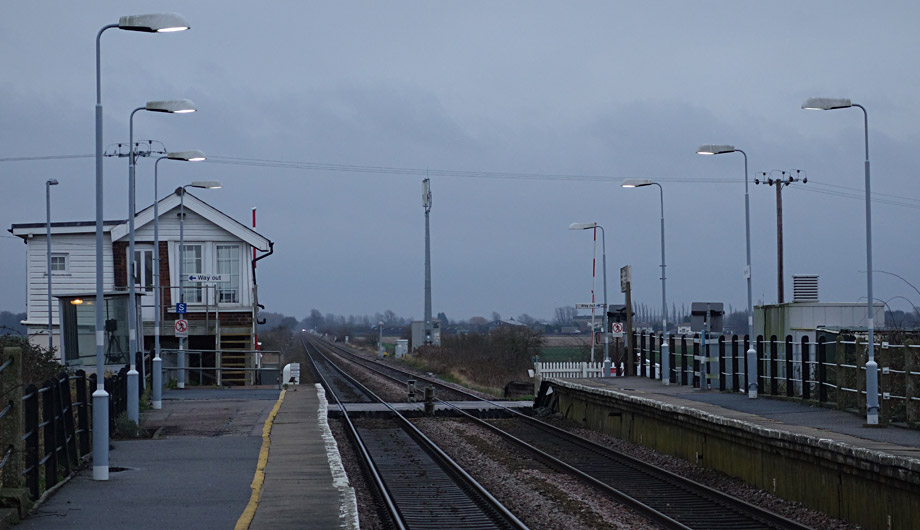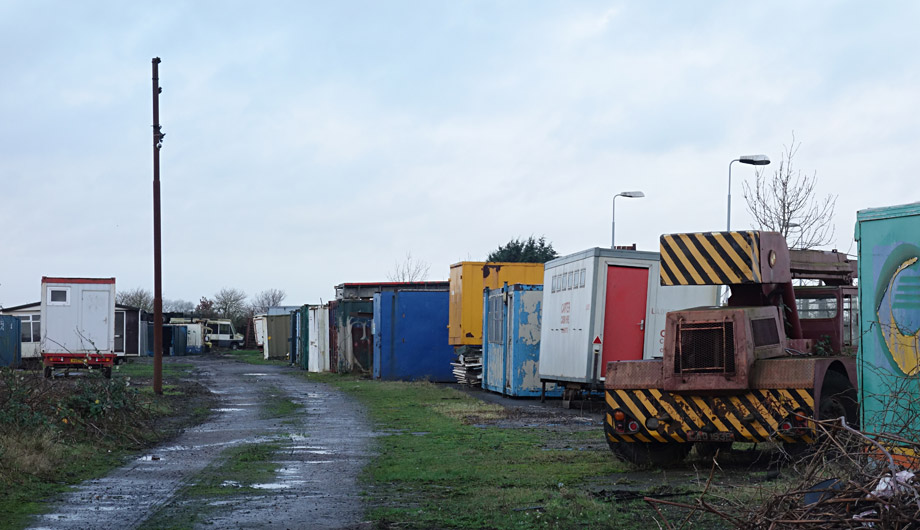How quiet is Britain's quietest railway station?
SHIPPEA HILL STATION is in the Cambridgeshire Fens about six or seven miles east of Ely. The BBC recently reported that it was Britain’s ‘quietest’ railway station with just 22 entries and exits last year. I wondered whether this meant it was also exceptionally quiet sound-wise, so I went there to find out.
A single train arrives at Shippea Hill each weekday and on Saturdays at around 7.30am, before moving on towards Norwich. There is no way back until the next day, when you would resume your journey by continuing eastwards and changing at Thetford. One platform has a structure like a bus shelter with a fixed wooden bench inside. Into it someone had gouged I ♡ MEL 2014.
Shippea Hill is a place of absences. The station has no ticket office and no ticket machine. There is a signal box but it doesn’t work any more. I know this because my girlfriend’s son works for Railtrack, and a few years ago he went out to help dismantle the signal box’s innards. ‘What’s Shippea Hill like?’ I had asked him. He smiled. ‘There is nothing there.’
Despite the name there is no hill. This was a disappointment, even by the Fenland standards which define as hills the merest nubs and protuberances above the level black soil. The contour lines on the map dawdle between 0 and 5 meters. To the north-west they plot a meandering stream bed, but nothing flows along it.
I set up my recording kit inside the platform shelter. This seemed about right, since it’s where anyone would probably spend their time once they’d become bored with sauntering from one end of the platform to the other. The wind scuffled around the shelter and the sky slowly lightened. The track extended in straight lines to the eastern and western horizons.

Crows cawed and some other birds peeped and chattered briefly, one quite close by. A car approached with its tyres noisy on the wet road surface like a boat’s wash meeting the shoreline. It went over the level crossing and headed south towards Mildenhall. After a few minutes a Co-op truck followed it.
In December 1976 there was a collision at the next level crossing about a mile to the east. The crossing was manually operated and drivers were meant to raise and lower the gates once they’d phoned the signalman at Shippea Hill. Someone forgot or couldn’t be bothered to lower them and so a lorry with a cargo of washed carrots drove into the path of a train. The train driver was killed instantly. The lorry driver escaped without injury. It had been a foggy day.

After an hour-and-a-half I packed away my gear and left the station to have a look around. A long-distance path named the Hereward Way was marked on the map as running northwards alongside the A1101. I could see no sign of it – perhaps you were supposed to walk along the roadside. Immediately to the south of the station was a large, untidy-looking house. Once this had been a pub called the Railway Tavern and a pilgrims’ website has a photo of it taken in 1977. I imagine it to have had tables with hammered copper tops in the saloon bar.
A neat sign marked ENGINE FARM pointed along a track running parallel to the railway line. To the left of it was a gate opening into a dumping ground for portakabins and rusting machinery. A board written in faded marker pen announced that there were shipping containers for sale and gave a phone number. Vast fields stretched to the south, nothing growing on them yet. Water from a pipe ran into the drainage ditch, where it had whipped up a pumpkin-sized clot of shuddering foam as startlingly white as the inside of a Tunnock’s tea cake.
From the house by the station a small-sounding dog yapped briefly then fell silent. Only the wind remained.
